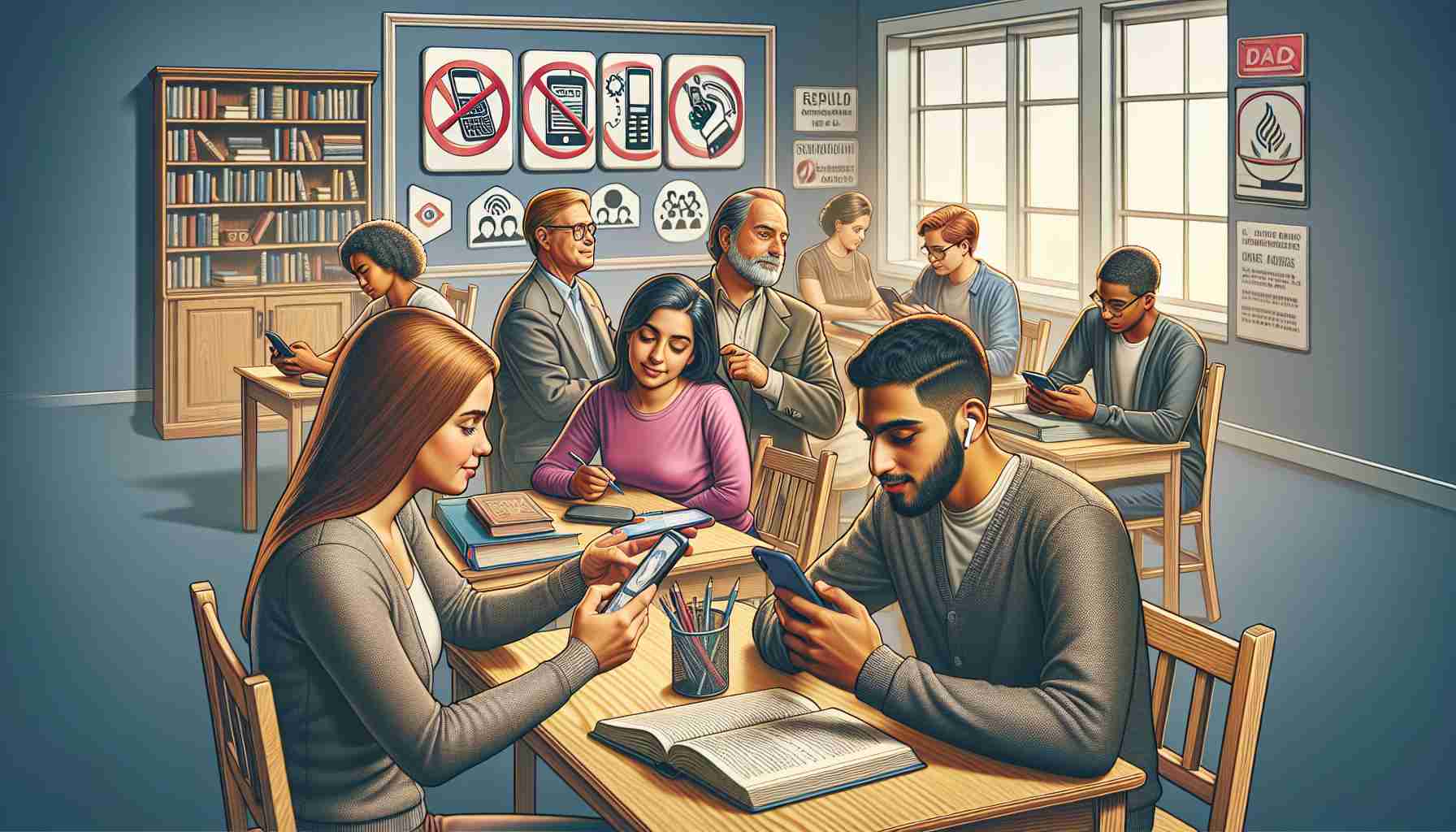The role of age restrictions in determining access to certain products has long been established, with weapons, alcohol, and pornography being prime examples. Adults are deemed to possess the necessary maturity to handle these items responsibly. However, the notion of applying age restrictions to smartphones has, until recently, been met with skepticism and dismissed as unnecessary control. Yet now, reports suggest that ministers are considering a ban on smartphone sales to those under 16. This potential measure appears to resonate with parents, as indicated by public opinion polls.
While smartphones haven’t traditionally fallen into the same category as mature-restricted products, government guidance in England and Wales discourages their use in schools. Many headteachers have already enforced rules to limit smartphone usage among students. It seems that stricter regulation of young people’s smartphone habits is on the horizon, with evidence suggesting a correlation between digital saturation and a rise in mental health issues amongst adolescents.
While causation cannot yet be definitively proven, the mass proliferation of platforms and devices that erode privacy, foster addiction, and transform social interaction into a competitive game raises valid concerns. The lack of an obvious alternative explanation for the parallel trends across different countries underscores the credibility of this connection. Societies may find it prudent to take proactive measures rather than wait for conclusive evidence.
Opposing viewpoints argue that it is not the devices themselves but rather the apps and content they facilitate that pose harm to young people. They advocate for teaching safe smartphone use or empowering parents to enforce guidelines. Supporters of this viewpoint argue that the state should not hinder a social revolution and that the benefits of phones outweigh the disadvantages. However, navigating the complexities of regulation in a rapidly evolving digital landscape, as illustrated by the challenges faced in crafting an online safety bill, showcases the difficulty of defining a balanced approach.
While remembering that advancements in communication technology have historically been accompanied by concerns about their impact, there is a need for caution in romanticizing analog childhoods. It is essential to acknowledge that, in many aspects, youngsters today are safer than previous generations. However, these observations should not dissuade us from carefully designing regulations to protect childhood from the invasive and commercialized influence of digital technology.
It is understandable that companies profiting from monopolizing the attention span of young minds desire unrestricted access. However, it is not immediately clear why such access should be granted without careful consideration of the potential consequences. Striking a balance between access and responsibility is vital as we navigate the challenges posed by smartphones in the lives of young people.
The potential ban on smartphone sales to those under 16 is indicative of a growing concern about the impact of smartphones on young people. This concern extends beyond individual use to the influence of smartphones in schools. Government guidance in England and Wales already discourages smartphone use in schools, and many headteachers have implemented rules to limit usage among students. The consideration of age restrictions on smartphones suggests that stricter regulation may be on the horizon.
One of the main motivations behind these potential restrictions is the correlation between digital saturation and a rise in mental health issues among adolescents. While causation has not been definitively proven, the proliferation of platforms and devices that erode privacy, foster addiction, and turn social interaction into a competitive game raises valid concerns. The lack of a clear alternative explanation for the parallel trends in different countries strengthens the case for proactive measures.
Opposing viewpoints argue that it is not the devices themselves that are harmful, but rather the apps and content they facilitate. Advocates for this viewpoint propose teaching safe smartphone use or empowering parents to enforce guidelines. They claim that the benefits of smartphones outweigh the disadvantages, and that the state should not impede a social revolution. However, the challenges faced in crafting an online safety bill highlight the complexity of regulating a rapidly evolving digital landscape.
It is important to approach this issue with caution and not romanticize analog childhoods while considering regulations. While advancements in communication technology have historically brought concerns about their impact, it is necessary to recognize that young people today are, in many ways, safer than previous generations. However, this should not discourage us from designing regulations to protect children from the invasive and commercialized influence of digital technology.
The debate surrounding age restrictions on smartphones raises questions about striking a balance between access and responsibility. Companies that profit from capturing the attention span of young minds may push for unrestricted access, but it’s essential to carefully consider the potential consequences. As we navigate the challenges posed by smartphones in the lives of young people, finding a balanced approach is crucial.
For more information on this topic, you can visit the Government of the United Kingdom website for updates on regulations and policies related to smartphone restrictions. Additionally, you may find valuable insights from organizations such as the Pew Research Center, which conducts research on the impact of technology on society.
